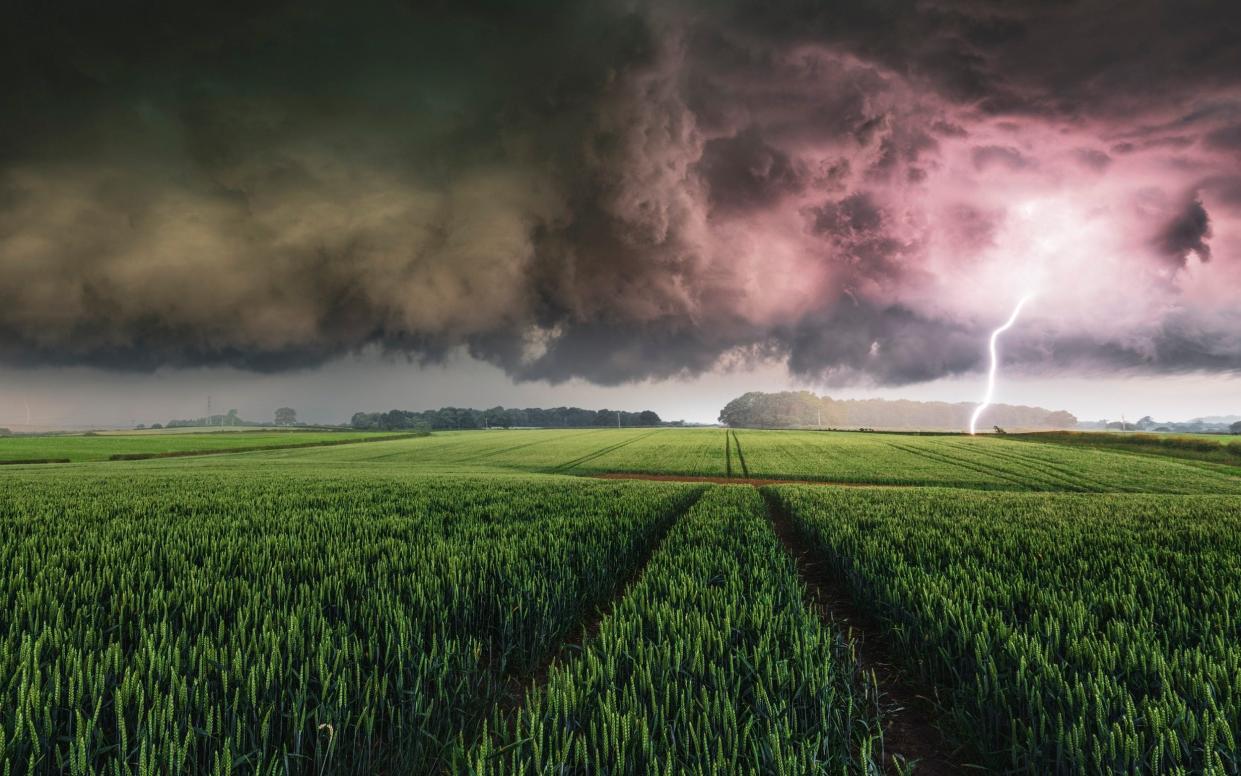The reason why storms are making your allergies worse

The weather has broken, and we are now battling storms and flash-floods. It’s farewell to dehydration and heat-stroke, and time to face a new health phenomenon, by the dramatic name of “thunder fever”.
Thunder fever is a phenomenon whereby sudden wet weather and a high pollen count triggers allergies and asthma attacks. Experts are now warning that this period of heat and heavy rain could drop a “pollen bomb” unlike anything the UK has seen since the early 1990s.
The technical name for this condition is “thunderstorm asthma” and, while it’s rare, it’s potentially very serious, says Dr Sophie Farooque, an allergy specialist and author of Understanding Allergy. This malaise is caused by a perfect storm of heat and humidity. Thunderstorms form when warm, moist air on the earth’s surface rises quickly (called up-draft) towards cooler, dry air high up in the atmosphere, which flows down (known as down-draft).
“Pollen grains are swept up by updrafts as a storm brews,” explains Dr Farooque. “As there’s moisture in the clouds, this essentially causes the pollen to rupture into smaller pieces. When the thunderstorm hits, you get down-drafts of wind which spread the fragments of pollen.” The smaller, “smashed” pollen particles increase the overall pollen count and are easier to inhale.
“Normally pollen grains are too big to be deposited in our lungs,” she says. “You might breathe them in and get hay-fever symptoms in your eyes or nose, but these smaller pieces can be breathed right into your airways and set off an asthma attack.” These attacks are rare, she stresses, but they can affect people who don’t even have a diagnosis of asthma.
The first formally recorded cases of thunderstorm asthma were in 1983, according to the UK Health Security Agency, and there have been a number of recorded incidents since. While thunder fever can affect anyone, the UKHSA suggests those under 30 years of age are particularly at risk, as are those with a previous diagnosis of asthma or other seasonal allergies.
Spates of this condition have proved deadly. In 2016, eight people were killed by the world’s largest thunderstorm “asthma event” in Melbourne, Australia, and hospitals saw a huge surge in patients with respiratory symptoms.
“If there’s a big outbreak, it will make the news,” says Dr Farooque, “but I think what happens is you get smaller attacks that don’t get reported. The first time I tweeted about this I had individual doctors getting in contact to say they think a recent thunderstorm was responsible for an increase in patients in A&E with breathlessness and asthma symptoms.”
So how do we ride out the storm in safety? “If you have hay-fever symptoms or you’re asthmatic, the safest thing to do is just be indoors,” says Dr Farooque. “If you do go out, consider wearing a mask.”
Less threatening but equally disruptive is the impact on hay-fever symptoms. “If you have rain for days without any hot weather, this will actually lower the pollen count,” says Dr Gideon Lack, head of the children's allergy service at Guy’s and St Thomas’s NHS Foundation Trust. “But with a combination of heat and moisture, pollen counts increase, which means more symptoms of hay-fever.”
This is because heat combined with humidity changes “the physical and chemical properties” of pollen grains so they’re more easily inhaled. “If you’re suffering, take a long-acting antihistamine on a daily basis, not only when you have symptoms, but on days when the pollen count is lower,” says Dr Lack. “A nasal spray with a low-dose steroid can also help reduce inflammation.”
According to Aneta Ivanova, a paediatric allergy consultant at Midlands Allergy Service, a “pollen bomb” can also exacerbate atopic eczema (atopic means “sensitive to allergens”). “Pollen becomes an irritant, so it can irritate your skin if you’re sensitive to it,” she says. “We recommend a good emollient, which should be applied daily. If you’re struggling, stay indoors as much as possible.”
Lack agrees: “In a general sense, we know there are individuals with hay-fever symptoms whose eczema clearly worsens in the hay-fever season. Eczema can be made worse by heat and perspiration, which we have more of in the summer, but high pollen counts can also directly irritate the skin.”
As the climate in the UK warms, it’s possible that episodes of thunderstorm asthma will become more common. “The message is that this is rare,” says Dr Farooque, “but it’s something that everyone who has a grass allergy should be aware of.”

 Yahoo Movies
Yahoo Movies 
